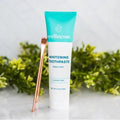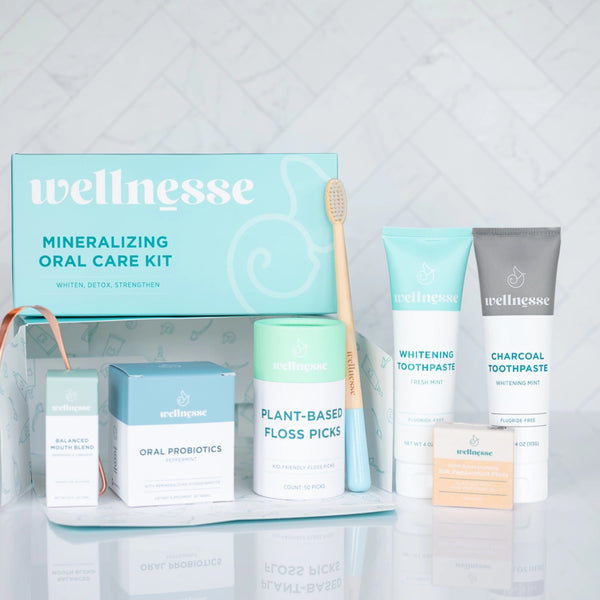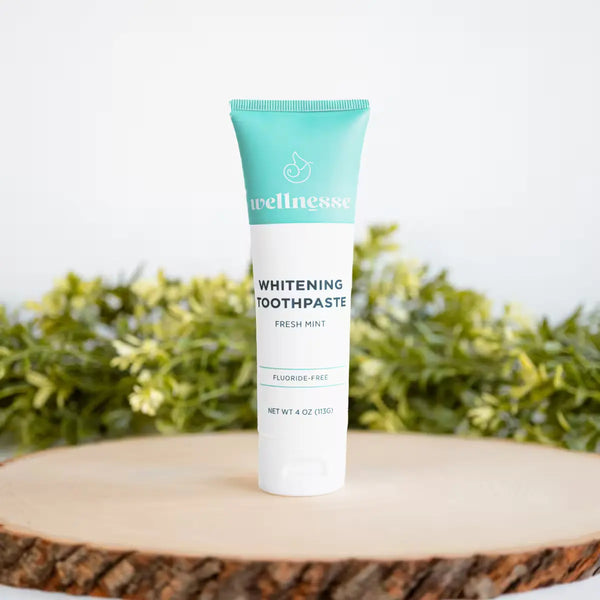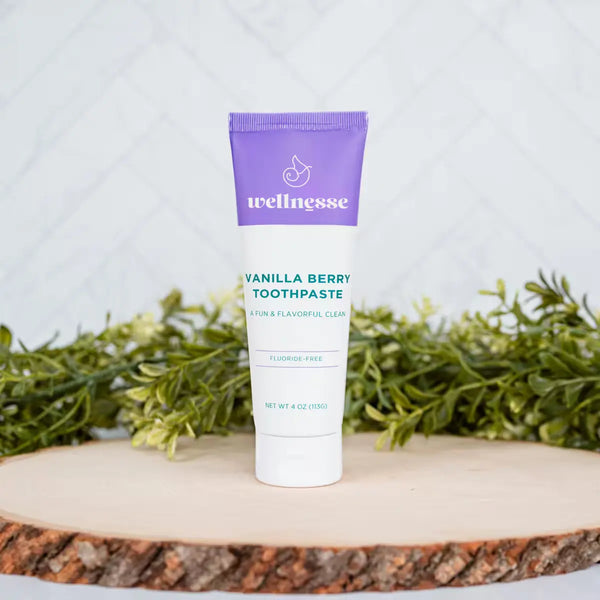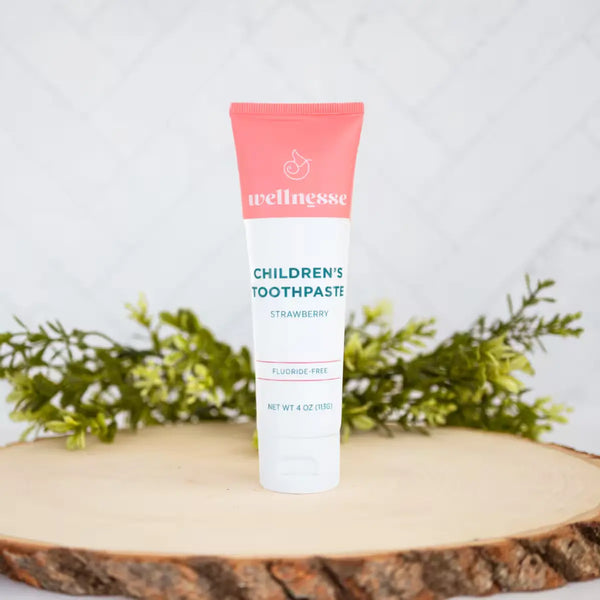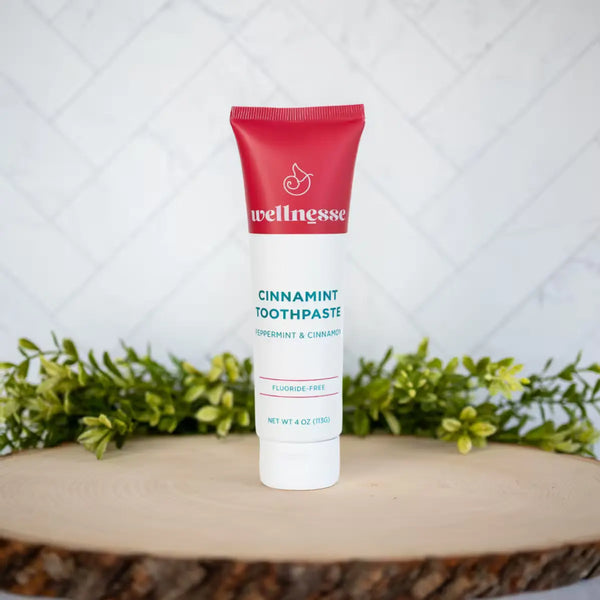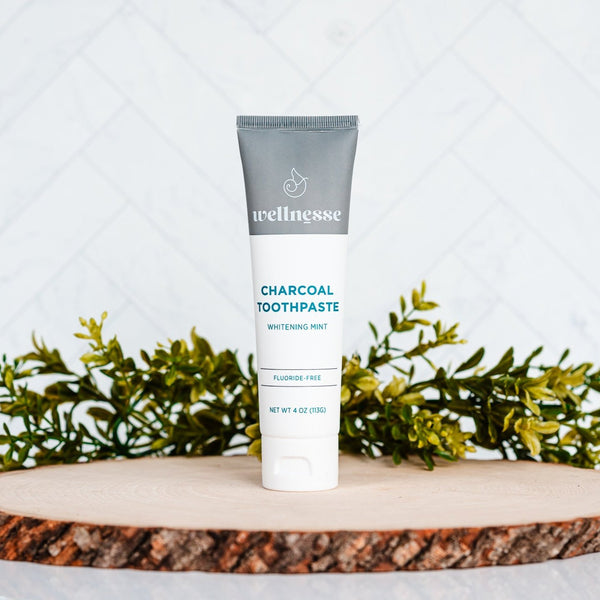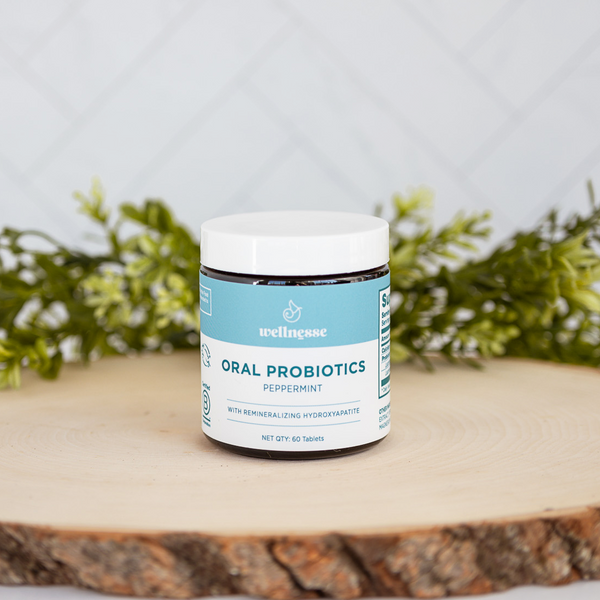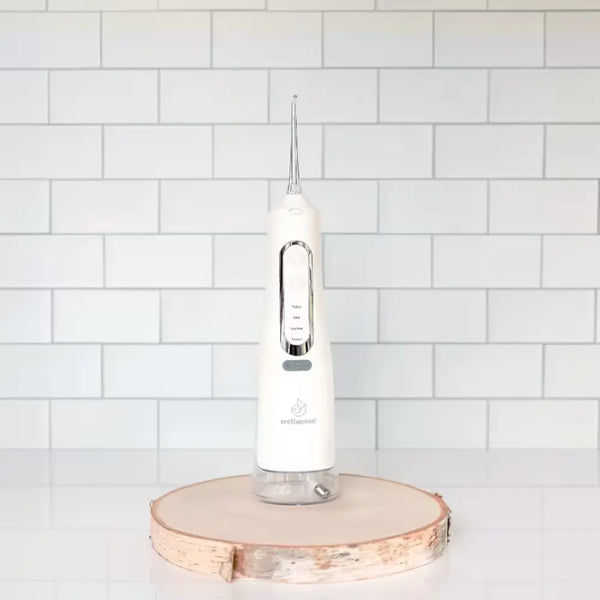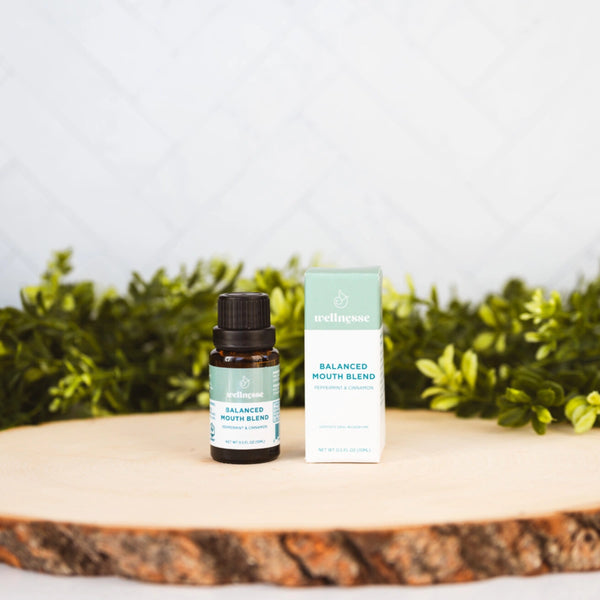The demand for safe and effective products has fueled the rise of
non-toxic toothpaste brands. These products steer clear of preservatives that are found in many mainstream toothpastes. Instead, they use nature-based ingredients that promote oral wellness. Natural brands like Wellnesse are now widely available in stores and online, offering a variety of options for every type of user. The goal is to provide the best toothpaste with no fluoride that works well while being free of unnecessary additives and harmful substances.
Benefits of Using Fluoride-Free Toothpaste
Peace of Mind for Sensitive Users
Choosing a fluoride-free toothpaste offers peace of mind, especially for households with young children or individuals with allergies. They can feel safer knowing the product is less likely to cause harm. Adults with allergies or skin sensitivities also benefit from formulas that don’t include artificial preservatives or strong chemicals. These gentler options help reduce irritation and allergic reactions in the mouth, lips, and gums. When families use products that align with their health goals, brushing becomes a shared wellness habit that supports everyone’s comfort and confidence.
Reducing Exposure to Harmful Chemicals
Standard toothpastes often include ingredients that some people prefer to avoid, such as triclosan, sodium lauryl sulfate, and artificial dyes. Opting for healthy toothpaste that avoids these substances can reduce the daily load of chemical exposure. These small choices may support better overall health by lowering contact with toxins that may disrupt hormones or irritate soft tissues. When you brush with a cleaner formula, you’re reminded that your choices matter.
Aligning Oral Hygiene With Personal Values
Using natural oral care products fits into a larger commitment to cleaner living and mindful consumption. Choosing these products becomes a daily affirmation of one’s beliefs. This connection between personal values and daily habits can create a stronger sense of purpose. Oral care becomes not just a matter of hygiene, but a reflection of your broader commitment to living well and doing good.
Key Ingredients in Natural Toothpaste Formulations
Remineralizing Agents
These agents closely resemble the mineral composition of human teeth, making them excellent for restoring enamel. They work by bonding with the tooth’s surface, helping repair early signs of decay and smoothing out rough spots. This makes them a strong choice in
fluoride-free toothpaste alternatives aimed at preserving dental health. These ingredients actively support the structure of the teeth. Unlike traditional fluoride, they offer benefits without introducing synthetic chemicals. People with sensitivity often find these compounds gentler and more effective in the long term.
Mild Abrasives
Cleaning teeth effectively also depends on the right level of abrasion to remove plaque without harming enamel. Herbal toothpaste options often rely on gentle abrasives like hydrated silica, calcium carbonate, or bentonite clay to do this job. These materials are chosen because they can scrub the surface of teeth without scratching or wearing them down. Found in many plant-based toothpaste choices, these mild abrasives balance cleaning power with safety. Their texture allows for daily use, even for people with dental restorations or enamel erosion. They don’t foam aggressively or leave behind residues, which makes them ideal for people looking for a more natural brushing experience.
Botanical and Herbal Extracts
A no-fluoride toothpaste often includes powerful herbal ingredients that have been used for centuries to support oral health. Botanicals like neem, clove, chamomile, and tea tree oil are commonly added for their antibacterial and anti-inflammatory effects. These natural extracts help fight the bacteria that contribute to gum issues, all while soothing irritated tissues. People searching for
toothpaste for healthy gums often find herbal blends more supportive than synthetic alternatives. The presence of these herbs can help reduce swelling or discomfort without relying on harsh medicated formulas. Beyond their functional benefits, herbal ingredients often contribute to a refreshing, earthy taste.
Surfactants and Flavor Options from Natural Sources
Instead of synthetic surfactants like SLS (sodium lauryl sulfate), many formulas use coconut-derived alternatives that are milder on tissues and gums. For sweetness, ingredients like xylitol or stevia are often added, which taste pleasant and prevent harmful bacteria. Flavoring is typically achieved using essential oils like peppermint, cinnamon, or citrus, which leave a clean, invigorating finish. These work together to create a formula that’s gentle and effective, yet still enjoyable to use. Those looking to buy fluoride-free toothpaste often seek products that taste fresh without the bitterness or burn found in traditional brands.
How to Choose the Best Fluoride-Free Toothpaste
Reading Ingredient Labels
When selecting toothpaste without harmful chemicals, the ingredient list is your most important tool. Reading labels carefully helps you understand what you're actually putting in your mouth twice a day. Look for short, recognizable ingredient lists with plant-based or mineral components. Brands that prioritize clean formulations will often highlight the function of each ingredient right on the label. Look for any warnings or usage guidelines.
Finding Toothpaste for Specific Needs
Everyone’s mouth is different, and so are their dental priorities. Some people look for whitening power, while others need relief from sensitivity or added gum protection. The best toothpaste without fluoride will vary depending on individual needs. For whitening, gentle abrasives and natural brighteners like charcoal or baking soda are often used. Sensitive users may benefit from formulas with soothing ingredients. Gum-focused pastes often include anti-inflammatory herbs such as myrrh or calendula. Trying sample sizes before committing to a full tube can also be a smart move.
Comparing Formats
Natural oral care has grown beyond traditional tubes. Today, anti-fluoride toothpaste is available in several innovative formats, each offering unique benefits. Here are common types and what to consider when choosing between them:
-
Classic Toothpaste: Enamel-safe toothpaste remains the most widely recognized and commonly used oral care format, offering a familiar experience for users of all ages. Their creamy consistency makes them easy to apply directly onto a toothbrush without any extra steps. In terms of formulation, pastes can be versatile, catering to different needs such as whitening, tartar control, or enamel repair. Anti-fluoride versions often feature ingredients like hydroxyapatite, xylitol, or calcium carbonate to promote remineralization and neutralize bacteria.
-
Toothpaste Tablets: These bite-sized, pre-measured tablets eliminate the need for squeezing tubes or guessing the right amount of paste. Users simply chew a tablet until it becomes a paste-like texture, then brush as usual with a wet toothbrush. They provide a smart bridge between innovation and responsibility in modern dental care.
-
Gentle Tooth Gels: Gels are a specialized format in the fluoride-free oral care spectrum, particularly suitable for individuals with sensitive teeth, receding gums, or mouth ulcers. Their smooth, non-abrasive texture provides a gentle cleansing experience, avoiding the gritty or foamy feel that some people find irritating. Gels often contain aloe vera, chamomile, or calendula, making them a go-to for those with oral sensitivities or after dental procedures.
-
Efficient Tooth Cleaning Foams: Tooth foams offer a lightweight, aerated alternative to traditional brushing products, commonly favored for their fast-acting and rinse-friendly nature. The foam format spreads quickly across the teeth and gums, allowing for quick applications in between brushes or when a full brushing session isn’t possible. Some are formulated to be left on the teeth without rinsing, contributing to prolonged exposure to remineralizing agents. These products are generally low in abrasives, making them a good option for people with dental restorations or sensitivity issues.
Whether you prioritize travel convenience, ingredient purity, or environmental impact, understanding the nuances between pastes, powders, tablets, gels, and foams empowers better choices in maintaining a holistic and consistent oral care routine.
Integrating Natural Toothpaste Into a Daily Routine
Best Oral Care Routine
Brushing twice a day is the foundation of any oral hygiene routine, but it’s only part of the equation. Consistent habits that go beyond brushing are essential for maintaining a truly healthy mouth. Using
natural oral care products allows people to take their wellness efforts even further by combining clean ingredients with mindful practices. These include brushing after meals when possible, avoiding sugary snacks between meals, and staying hydrated. Many also benefit from using a soft-bristled toothbrush and replacing it every three months. Morning routines often focus on removing overnight buildup, while evening routines emphasize removing the day’s food and debris. Combining natural toothpaste with these routines creates a stronger, more holistic effect.
Complementary Tools
A comprehensive oral care routine extends beyond the toothbrush and benefits significantly from additional support products specifically designed to target key areas. Incorporating toothpaste for healthy gums alongside other tools can create a more effective and complete regimen. Here are tips to expand your routine:
-
Dental Floss: Food debris and plaque often collect in these gaps, contributing to gum inflammation, tartar buildup, and eventual tooth decay. By gently sliding floss up and down each tooth's side and beneath the gum line, users can effectively disrupt and remove this buildup. Daily flossing has been linked to reduced rates of gingivitis and periodontal disease, especially when performed with proper technique.
-
Tongue Scrapers: These microbes contribute to bad breath and can affect taste perception if not properly managed. A tongue scraper is a simple yet highly effective tool designed to remove this buildup. Made from metal, plastic, or silicone, tongue scrapers gently pull debris, dead cells, and biofilm off the tongue, leaving it visibly cleaner and significantly reducing odor-causing bacteria. Unlike brushing the tongue, which may only move bacteria around or cause gagging, scraping offers a more efficient and targeted solution.
-
Natural Mouthwash: Mouthwash acts as a powerful adjunct to brushing and flossing, targeting areas that are difficult to reach manually and offering an extra layer of antibacterial protection. Regular rinsing with a natural mouthwash can aid in reducing inflammation, fighting gingivitis, and freshening breath for extended periods. It’s an easy, quick step that can be added after brushing or flossing, especially before bedtime or after meals. Natural options may be less harsh in flavor, encouraging more consistent daily use.
These tools not only enhance the effectiveness of brushing but also support a cleaner, fresher, and healthier mouth from every angle. Complementary tools offer practical solutions that fit seamlessly into modern life.
Nutritional Support for Stronger Enamel and Healthier Gums
What you eat has a direct effect on your dental health. A diet rich in essential vitamins and minerals can strengthen enamel and reduce inflammation in gum tissues. Calcium, phosphorus, and vitamin D all play a vital role in keeping teeth resilient and gums firm. In combination with the benefits of using
non-toxic toothpaste, a nutrient-rich diet completes a well-rounded strategy for oral wellness. Leafy greens, dairy, nuts, and crunchy vegetables not only provide these nutrients but also help clean the teeth naturally as you chew. Avoiding frequent snacking on sugary foods can prevent acid attacks that wear down enamel. Drinking plenty of water helps flush out bacteria and food particles between brushing. In this way, oral care becomes a whole-body practice. Nourishing your body supports your smile from the inside out.
Transitioning from Fluoride to Natural Alternatives
What to Expect
Switching to
fluoride-free toothpaste alternatives can feel different at first, especially for those who have used conventional brands their whole lives. Many users notice a change in texture, flavor, or foaming level, which might seem unusual initially. It may take a few days or weeks for your mouth to adjust to the more subtle experience of brushing without synthetic ingredients. This adjustment period is completely normal and doesn’t mean the product is ineffective.
Monitoring Progress
While daily care is essential, professional guidance remains important during your transition to natural oral care products. Dentists can provide insight into how well your current routine is working and check for signs of enamel wear or gum issues. Even if you're using top-quality, fluoride-free products, professional cleanings are still needed to remove tartar and detect early problems. By keeping up with regular appointments, you can track your oral health progress over time and make any needed adjustments.
Choosing non-toxic toothpaste brands is often part of a broader shift in how people approach their health. This includes prioritizing products that align with a gentler, more conscious lifestyle. Using a natural toothpaste becomes a small yet powerful act that contributes to larger goals, like reducing exposure to toxins and supporting sustainable companies. These daily routines begin to reflect personal values more clearly, from what goes into your shopping cart to what sits on your bathroom counter.


